La Purisima Mission State Historic Park (CA Mission #11)
Introduction
Text-to-speech Audio
Images
The campanario of La Purisima. La Purisima is the only mission not designed in a quadrangle, having been rebuilt after 1812 with a linear structure to protect from further earthquakes.
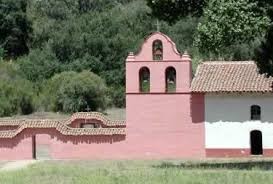
The original mission location is about five miles from the current mission, at the south end of Lompoc. On South F Street.
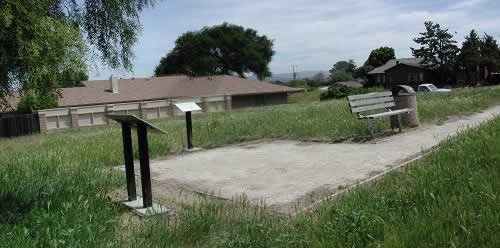
Mission ruins circa 1900
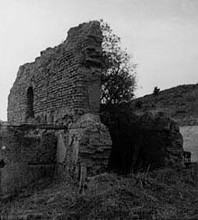
1854 drawing of mission layout as it would have appeared shortly after it was constructed in second and final location.
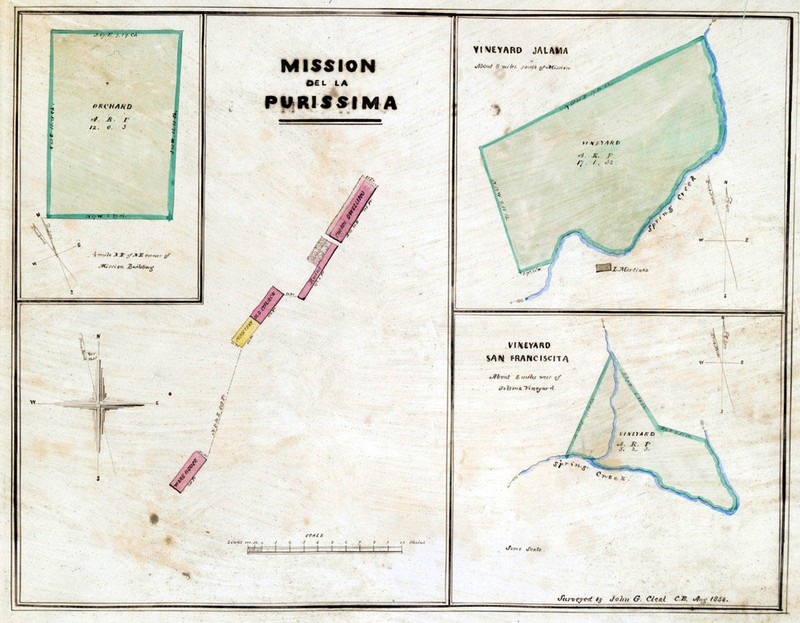
C.C.C. workers rebuilding mission. Taken in 1935
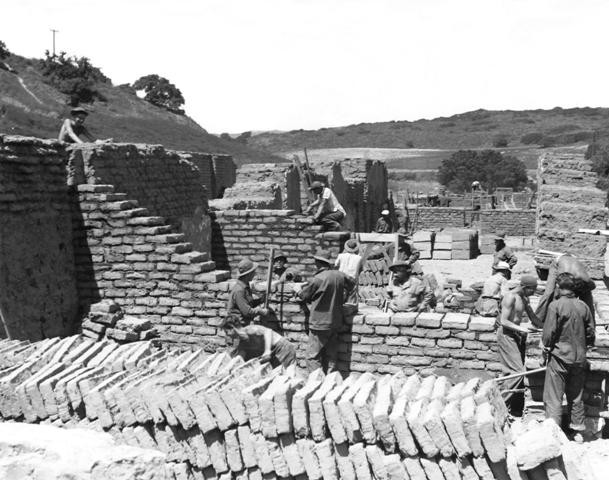
Replica of Chumash hut on La Purisima State Historic Park grounds.
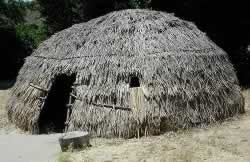
Grave and marker in church of Father Mariano Payeras
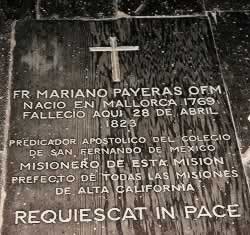
C.C.C. camp by ruins.
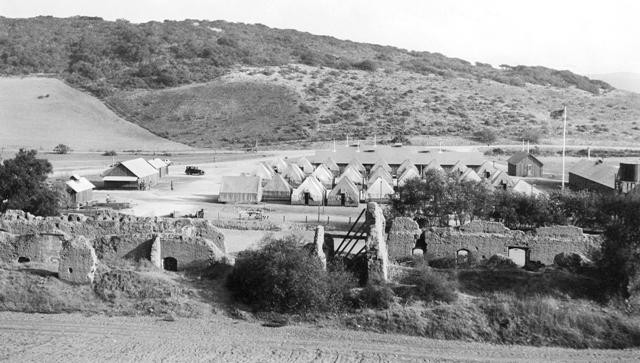
Backstory and Context
Text-to-speech Audio
Junipero Serra, the Franciscan Father who spearheaded the earliest missions, had died by the time of Mission La Purisima Concepcion's founding on December 8, 1787. On the other side of the continent, the Constitutional Convention of the infant United States had been held only a few months before, and Spanish interests would remain safe from American interference for several more decades. Serra's successor Father Francisco de Lasuėn continued to expand the mission network, working to fill the large gap between San Diego and Monterey with missions no more than few days' travel apart.
With these missions the Spanish friars planned to pacify and convert the native population, encouraging them to adopt a European, Christianized way of life. To this end, the valley near present-day Lompoc where La Purisima Concepcion took shape seemed ideal: the Chumash Indians in the region were friendly to the Spanish, and early problems with drought were soon solved with an extensive irrigation system. In 1802, the adobe church was finished and the population of Indian neophytes grew to 1,500. The mission possessed nearly 20,000 cattle by 1810.
On the 25th anniversary of its founding, however, tragedy struck. A massive four-minute-long earthquake on December 8, 1812 demolished the mission completely. Rains swept in the following day and reduced the crumbled walls to mud. A number of other missions in Southern California were affected, as well. The Franciscans chose to move to a new site several miles away, which remains La Purisima's current location.
They began to rebuild there in the “Valley of the Watercress.” These new structures were built with earthquakes in mind, with walls four-and-a-half feet thick, reinforced with stones. In a departure from the quadrangle design, normal for missions, the new buildings were built along a line and oriented to minimize shaking during quakes--the only mission in California not built in a quadrangle. A complex irrigation system brought water from the hills to the mission, a distance of three miles.
In 1815, the reconstruction received a new boost when their energetic leader, Father Mariano Payeras (who had been with the mission since 1804) was elected President of the California missions upon Francisco de Lasuen's death. Rather than move to the President's traditional office at Mission San Carlos Borromeo in Carmel, Payeras elected to administer his duties from La Purisima.
Three different events soon struck blows to the mission. First, in 1816, the area was hit with a severe drought which killed off most of the mission’s immense sheep herd. Then, in 1818, a fire destroyed most of the worker's homes. Finally, Father Payeras died in 1823 and with his passing, the special attention enjoyed by La Purisima soon passed back to the old President’s headquarters in Carmel. To make matters worse, supplies to the missions and Spanish military from the Spanish crown had been largely cut off since 1821 when Mexico declared independence from Spain. This caused friction between the mission residents and soldiers, who now all had to depend on the mission for support.
In 1824 the new church was nearly complete when this friction caught fire. The Chumash neophytes at nearby Mission Santa Inez (in present-day Solvang) revolted against cruel treatment at the hands of Spanish soldiers. Rebellion followed at Mission Santa Barbara and La Purisima, especially after a neophyte from La Purisima was whipped at Santa Inez. Chumash neophytes occupied La Purisima, then expelled the soldiers and their families and one of the Franciscan padres. The second friar was allowed to remain within La Purisima, which the Chumash fortified against attack. The Spanish would not brook the situation in perpetuity, and 109 soldiers were sent from the garrison in Monterey (the seat of Spanish power in Alta California) to subdue the revolt and reclaim La Purisima. After a 2-1/2 hours assault on the makeshift fort, Spanish troops killed sixteen Chumash Indians and wounded many others, with only one Spaniard killed and two wounded. More Chumash were executed for having killed four Spanish travelers near La Purisima at the beginning of the revolt.
Life at the mission resumed, but collapsed again 1834 when the new Mexican governor of Alta California secularized the mission system, removing all Franciscan authority and parceling out land to the Chumash, who were required to produce goods for the government. Finally, continuing the trend of disaster striking La Purisima every ten years, the mission's lands were sold to John Temple, and American settler, who used the buildings as stables and allowed the structure to fall into decay. This state persisted until 1903 when the Union Oil Company purchased the land.
Union Oil soon recognized the historical value of the property, and during the 1930s began work with the National Park Service to preserve and rebuild the site. The Catholic church, to which the church itself had been repatriated, donated the same to Santa Barbara County. For their part, Union Oil donated six parcels of land, and the State of California purchased another 507 acres to work toward a new State Park. In 1934, in the depths of the Great Depression, elements of the Civilian Conservation Corps arrived to begin construction on the restored mission. After intensive historical study, the original mission plans were recreated and starting in 1936, C.C.C. Company #1951 effectively rebuilt the mission from the ground up. (According to engineering reports a few original walls and foundations were used; and some of the original soap vats and cisterns could be cleaned out; but little else). Throughout the reconstruction, structures were built using the original methods of the Spanish and Chumash: bricks, floor, and roof tiles were made by hand. Furniture likewise was made by hand. The project is the most complete and authentic mission restoration in California. On December 7, 1941--the same day the Japanese attacked Pearl Harbor--the new State Park was dedicated, and began working toward its vision of being the "Williamsburg of the West."
The CA State Parks and a dedicated group of living history volunteers, Prelado de los Tesoros de la Purísima ("Keepers of the Treasures of La Purisima") continue to preserve the unique history of the Spanish missions.
Sources
2. Forbes, Alexander (1839). California: A History of Upper and Lower California. Smith, Elder and Co., Cornhill,
3. London. Ruscin, Terry (1999). Mission Memoirs. Sunbelt Publications, San Diego, CA.
4. Yenne, Bill (2004). The Missions of California. Thunder Bay Press, San Diego, CA.
5. Baxter, Don J.. Missions of California. San Francisco, CA. Pacific Gas & Electric Company, 1970. Compiled from a series of articles in P.G. and E. Progress
6. Hoover, Mildred Brooke. Rensch, Hero Eugene. Historic Spots in California. Edition 3. Stanford, CA. Stanford University Press, 1958. Mission La Purisima Concepcion, pp.58-59.7. History Overview. Prelado De Los Tesoros: La Purisima Mission State Historic Park. Accessed January 23, 2018. http://www.lapurisimamission.org/history-overview/. 1787-1812, 1813-1834, 1835-present.
8. Mission La Purisima Concepcion. California Missions Resource Center. Accessed January 23, 2018. http://www.missionscalifornia.com/keyfacts/la-purisima-concepcion.html.
